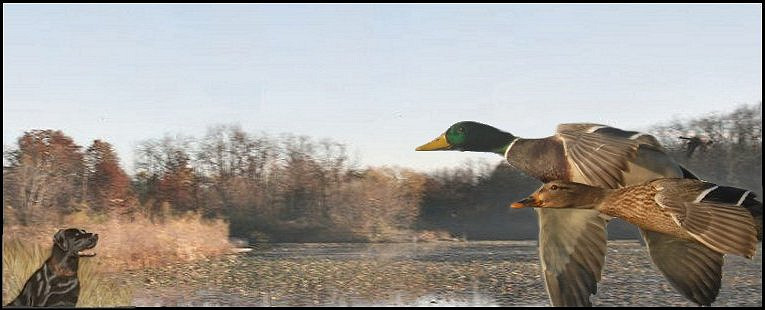The Backcountry Press
The country's premier daily HUNTING, FISHING & OUTDOOR news in the USA and around the globe. Read whats happening in your neck of the woods & beyond.
The Backcountry Outdoor News reports the latest hunting and, fishing news along with fishing derbies and tournaments
from:
| ||||||
| ||||||
|
HUNTING NEWS CATEGORIES
© 2010 Backcountry Press Outdoor News - All Rights Reserved Website Design by:
Connect With Us
 | ||||
Disclaimer: The views expressed on this site are that of the authors and not necessarily that of TBC Press
 | ||||
Step-by-Step Guide to Getting Started with Hunting Waterfowl
Submitted by: TBC Press
Posted on: 06/26/20
Don’t let those folks, or the unknown, stop you from chasing ducks and geese. Some of the best days of my life have been spent waist-deep in a marsh holding a shotgun and blowing a duck call. Those days are waiting for you as well—if you stick with it. This sport, like so many others, rewards patience and hard work. The more you go, the more you learn. So, let’s get started.
If you haven’t already, the first thing you will need to do is take a hunter’s safety course. Some states don’t require hunter education to buy a hunting license if you’re of a certain age, but it’s smart to take the class and get certified regardless. Because 1) you’re eventually going to travel to another state to hunt where hunters of every age are required to possess a hunter’s safety card, and 2) you’ll learn how to handle a gun properly and hunt in a safe manner.
You must also purchase a hunting license, state duck stamp, and federal duck stamp prior to hunting. Ninety-eight percent of all federal duck stamp money goes directly to help acquire and protect wetland habitat, and to purchase conservation easements for the National Wildlife Refuge system. It’s one of the most successful conservation programs in North America, so you can be proud that your dollars are helping to protect waterfowl habitat.
There are four waterfowl flyways in North America—Pacific, Central, Mississippi, and Atlantic—and each has different daily limits for the number of ducks you can kill by species. Dark and white goose limits vary state to state (and in some cases, different zones within the same state have different goose limits), but they all comply with guidelines set forth by the U.S. Fish and Wildlife Service. In the Central, Mississippi, and Atlantic flyways in the U.S., you can shoot six ducks per day. In the Pacific Flyway, the daily bag limit is seven ducks. Within those daily limits, you can only take a certain number of each species. For instance, the mallard limit in Atlantic Flyway states is two (only one hen allowed); in Pacific flyway states the mallard limit is seven (two hens allowed). Check the waterfowl digest of the state you’re hunting in to make sure you know what ducks you can kill before you pull the trigger.
Each province in Canada also has a different set of daily limits for ducks and geese, which is set by the Canadian Wildlife Service. So, if you go to British Columbia, Alberta, Saskatchewan, and so on, check the provincial game laws before hunting. For more information on HUNTING WATERFOWL IN CANADA see; Canada 2020-21 Waterfowl Permits on Sale Aug 1st
In addition to daily bag limits, there are possession limits, which are typically three times the daily bag limit. So, if the daily limit is six ducks, you can never have more than 18 ducks in your possession. Realize that the definition of “possession” means waterfowl in any form, from whole birds to jerky sticks. Technically, even after you butcher your ducks, grind them into burger, stuff them in sausage casings, and put them into the freezer, they still count towards your possession limit. Until you have eaten or gifted them, ducks and geese count toward your possession limit.
Tagging waterfowl is also an important rule that some hunters overlook. My suggestion is to always keep the birds that you’ve shot with you at all times. Bring a game strap, and put your dead ducks and/or geese on it. This helps you keep track of your limit during the excitement of a hunt. When the hunt is over, tag the birds so you are compliant with regulations. Toe Tags are the best way to ensure you are legal. The tags have all the information you’re required to fill out in order to be legal. There are some stiff penalties for breaking migratory bird laws, so do your homework before getting started.
For more information on WATERFOWL SEASONS, SPECIES, IDENTIFY DUCKS, WAYS TO HUNT WATERFOWL, PLACES TO HUNT WATERFOWL, WHEN TO HUNT WATERFOWL and MORE see; https://www.outdoorlife.com/story/hunting/how-to-hunt-ducks-and-geese/
Stock Image - Artile courtesy of Outdoor Life
####
Publishers Note:
As OUR COUNTRY REOPENS AGAIN (from the COVID-19 pandemic) and continue to enjoy outdoor activities, ALL outdoorsmen (man, woman, child) should follow the guidelines set by nps.gov. These guidelines include; social distancing, the Leave No Trace principles, including pack-in and pack-out, to keep outdoor spaces safe and healthy.
Article #A20-2144
Waterfowl is one of the smallest, most niche communities you can find in hunting. There’s only about 1 million of us waterfowl hunters, but we see more of each other than those who pursue whitetails, mule deer, elk, and other big-game species, namely because our quarry inhabits condensed areas for short periods on their annual fall migration. In many places, you will have to share wetlands with your fellow hunters and compete for birds. Sometimes you’re going to be hunting next to veteran waterfowlers who know what they’re doing—or think they do—and aren’t afraid to tell newbies to scram.














